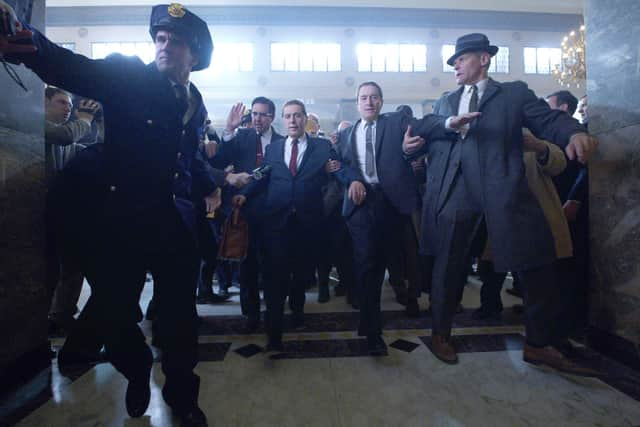Film Pick of the Week: The Irishman - review by Yvette Huddleston
At nearly three and a half hours long, this masterpiece from Martin Scorsese is an epic, but it is absolutely well worth investing the time.
It proves once again that there are few directors that even come close to Scorsese in terms of creative storytelling, visual flair and getting the best performances out of his cast. And what a cast it is – headed up by Robert De Niro, Al Pacino, Harvey Keitel and Joe Pesci, who was persuaded to come out of retirement to take part.
Advertisement
Hide AdAdvertisement
Hide AdAdapted by screenwriter Steven Zaillian from Charles Brandt’s 2004 true crime non-fiction bestseller I Heard You Paint Houses, it is a story of mafia brutality, political corruption and its consequences. Scorsese knows this world like the back of his hand and The Irishman is a brilliant late career companion piece to Mean Streets and Goodfellas. De Niro plays Frank ‘the Irishman’ Sheeran, a World War Two veteran whose experiences in that conflict enabled him to become a cold-blooded killer in his civilian life. We quickly learn that ‘painting houses’ is a euphemism for carrying out mob hits.


The film opens with Sheeran as an elderly man in a nursing home recalling events from his past. In the 1950s he is working as a truck driver before being taken on as a hitman by head of the Bufalino crime family Russ Bufalino (Pesci). He is soon introduced to Teamsters’ union boss Jimmy Hoffa (Pacino) and becomes his bodyguard, confidant and friend during a turbulent period in his life when the then Attorney General Robert Kennedy was investigating Hoffa’s links with organised crime. Hoffa is eventually imprisoned and when he is released from jail there is more trouble ahead as he tries to reassert himself on the union and his mafia associates in a way that causes displeasure. An unwise move – and one which tests his relationship with Sheeran.
The film covers the 1950s, 60s and 70s, right up to the early 2000s (Sheeran died in 2003) and having De Niro, Pacino and Pesci play younger versions of their characters feels at first a little problematic in terms of credibility – the wigs and make up are good but as octogenarians they just don’t move like men in their 40s. However, ultimately it adds a level of poignancy in terms of the characters’ sense of looming mortality and regret at past misdemeanours. And all their performances equal the very highest standards each have ever reached.